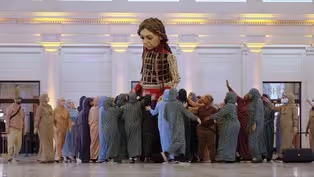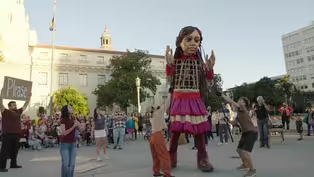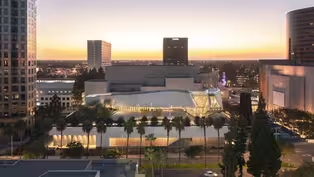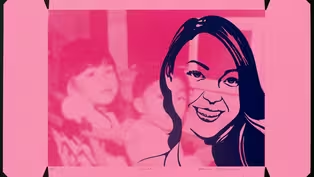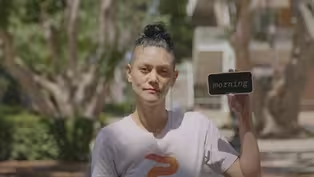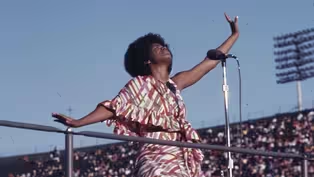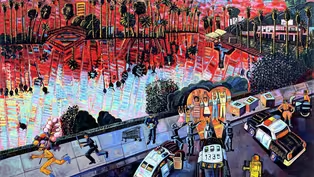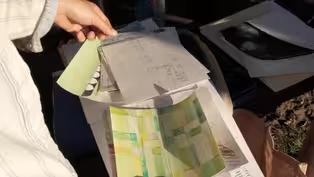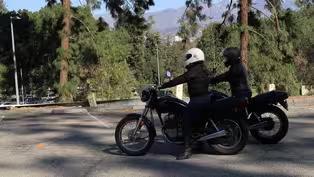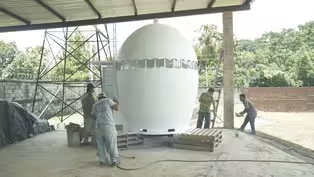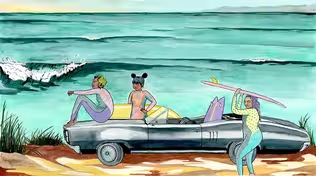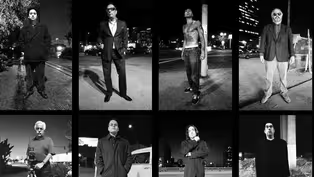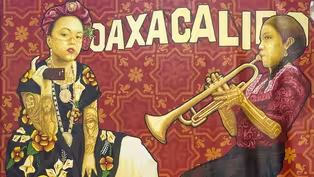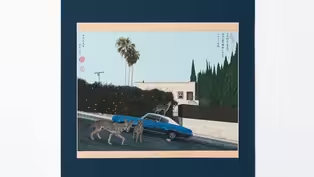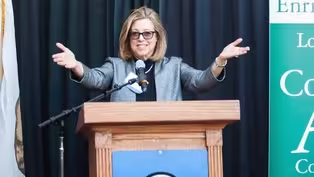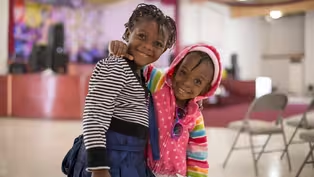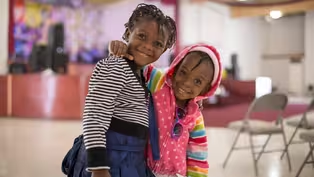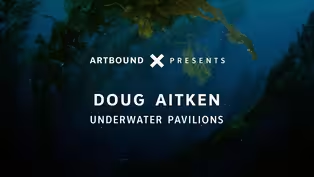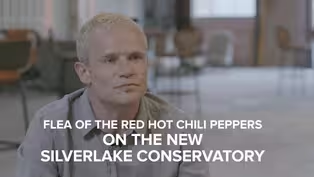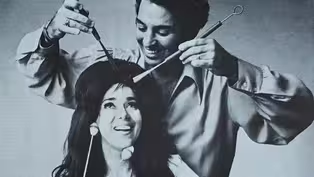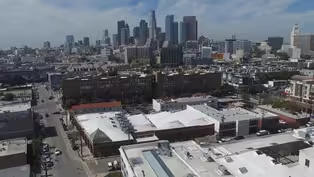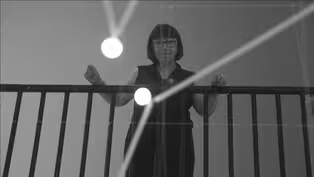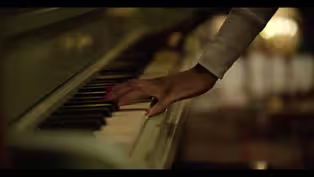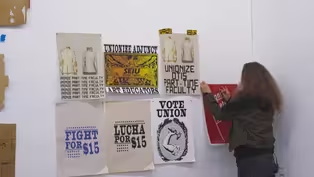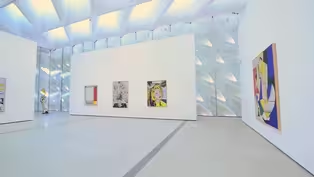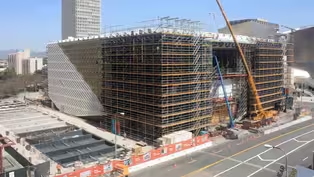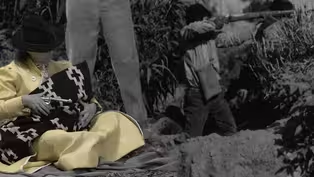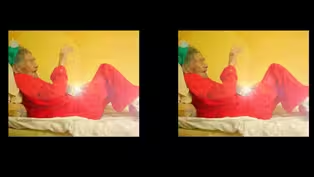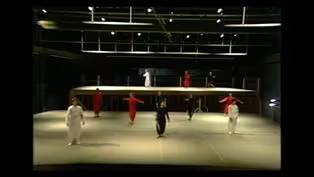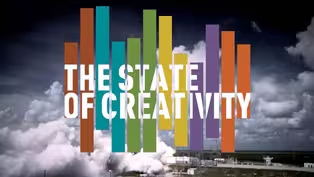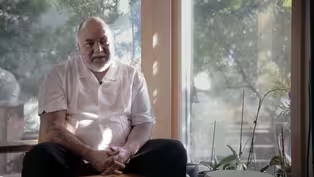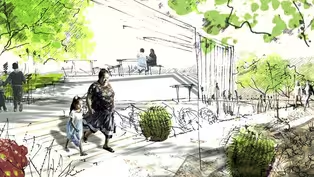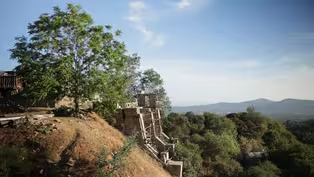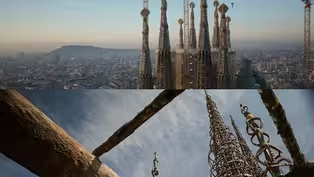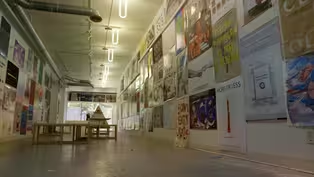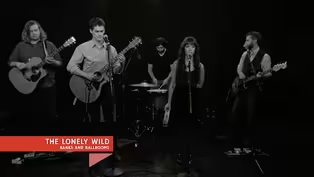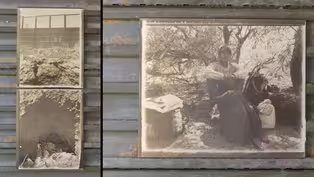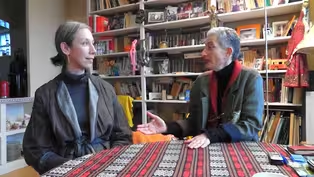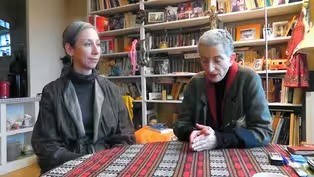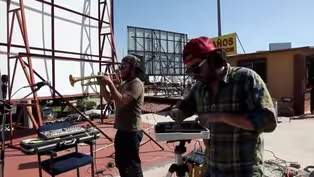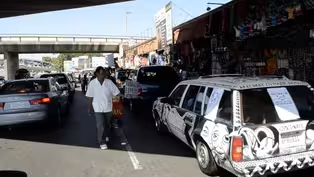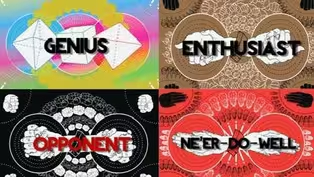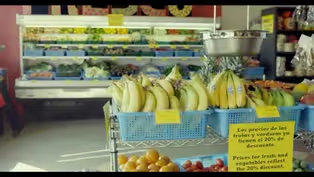
Puppet of 10-Yr-Old Syrian Refugee, Little Amal, Learns ASL
Clip | 9m 33sVideo has Closed Captions
Little Amal, a 12-ft-tall puppet of a Syrian refugee, learns ASL with Deaf West Theatre.
Little Amal, a 12-ft-tall puppet of a 10-yr-old Syrian refugee, embarked on a global tour to spread awareness about displaced people around the world — and during her journey through Southern California, learned ASL with Deaf West Theatre in Pasadena. Through this encounter, we learn that words aren’t everything and a lot can be said within the silence. Sometimes the loudest truths have no sound.
Problems playing video? | Closed Captioning Feedback
Problems playing video? | Closed Captioning Feedback
Artbound is a local public television program presented by PBS SoCal

Puppet of 10-Yr-Old Syrian Refugee, Little Amal, Learns ASL
Clip | 9m 33sVideo has Closed Captions
Little Amal, a 12-ft-tall puppet of a 10-yr-old Syrian refugee, embarked on a global tour to spread awareness about displaced people around the world — and during her journey through Southern California, learned ASL with Deaf West Theatre in Pasadena. Through this encounter, we learn that words aren’t everything and a lot can be said within the silence. Sometimes the loudest truths have no sound.
Problems playing video? | Closed Captioning Feedback
How to Watch Artbound
Artbound is available to stream on pbs.org and the free PBS App, available on iPhone, Apple TV, Android TV, Android smartphones, Amazon Fire TV, Amazon Fire Tablet, Roku, Samsung Smart TV, and Vizio.
Providing Support for PBS.org
Learn Moreabout PBS online sponsorship[music] We started the journey to try and investigate and honor and retell a story that is a current, very painful story in our world.
Her name is Little Amal, traveling over 6,000 miles on an epic journey across continents.
She's now reaching the end of her walk across America, exploring themes of immigration and migration.
We're not here to entertain.
We are here to try and go through a moment honestly.
Maybe that's why theater is so attractive.
We've performed in LA for over 30 years.
We use a combination of sign language and spoken English to create a seamless balance.
If you connect and try to communicate, it's not just like, "Oh, here's a word."
We want to make it part of a sentence.
Like, "Oh, why are you sad?
What's going on?"
He's saying, "Okay.
Yes, that's cool."
And our mission is to reach both the hearing and the deaf communities through theater.
Then he's third.
Who's third?
The sign is wonderful.
Wonderful.
-Wonderful.
-He could do that.
When DJ first approached me about this project, he said, "Oh, okay.
Little Amal is coming and Deaf West is taking the creative lead, and we're going to be the people encountering her."
He wanted some form of sign language exchange.
My sign is please, but I'm going to be adding-- -He's going to hug.
-Oh, yes.
I'm asking for a hug.
Can I hug you?
This is about how do you find friends when you don't have a common language, and is it that different?
I started acting when I was around 16 and at that time I was in high school.
One, remember I saw a poster for a play and I thought well, why not audition?
Then we're all going to do, we love you.
We love you.
You can gesture to the audience with an open palm, you, and we'll gesture to you with an open palm.
[shouting] [music] Amal is a 10-year-old refugee, a Syrian, from the agricultural area around Aleppo.
She's a vulnerable but resilient 10-year-old who's looking for her family, looking for safety, and is wandering from place to place alone, confused, but also full of hope and optimism.
She's also a 12 foot puppet.
Amal is an embodiment of the power of art, an idea that grew out of the real life experiences of migrants from the Middle East and Africa, living in a camp in Calais, France with an uncertain future.
We are here because we're walking along your southern border, this open wound that is dividing this country.
It's a collaborative effort to create a corridor of a welcoming space that thinks of refugees not as a burden, but as potential.
We were trying to create something that was going to be very relevant to Amal's story and her journey, and also, the experiences of the deaf population here, the deaf community.
The struggles that they go through feeling like outsiders.
The same thing that Amal as a refugee goes through.
[music] The story of Amal is so common in Los Angeles.
This is a city of immigrants and refugees.
As deaf people, we are born into a world that doesn't understand us.
So for that reason, we relate to so many of the refugee and immigrant stories.
I am a hearing person, but I worked in the deaf community for quite a while and picked up ASL from the street with the people.
The ability to share a space with others, be it on the street or be it on stage, this is the quintessential ingredient.
Amal is learning the signs as we do them to connect with the people around her.
: As she's doing that, she understands that it becomes a connection between them.
When the idea started to happen, when we started the first conversation, silence became very interesting.
Amal is silent, but with a different language that we don't know, The Amal team said, "Challenge us.
Give us the signs that we can learn."
We said, "Okay."
[music] We wanted to teach Amal "here" and "welcome" because those are signs that we use in our community to welcome people from outside of our community.
"Here" refers to a place and a sense of connection to this place and "welcome" the sign itself means that we are bringing someone in.
an we use that with people who are new to our community to show that we embrace them with an open welcome because we know that they need a place to call home.
Oh, we need to teach science.
Thank you.
That's the most important thing.
We want to emphasize it a lot.
Thank you.
That way, when the line goes past Amal, they can all say thank you to her as they go by.
You need to go in and get ready, right?
Yes, we should.
We'll see you later.
Let's have fun.
[music] One beating heart.
Amal is not a big mechanical structure.
She is humble and very human-like.
She's a real person that is a communal effort of three puppeteers at a time.
The puppeteers have to listen tot eh puppet.
They have to listen to each other, and then they also have to listen to the environment around them.
People think of Amal as a real person.
Partly because we think of her as a real person when we design the events, when we think of her, when we create the content that will great her in each location, or interactions with people.
When you're looking at an emotion for a puppet, I usually start with the emotion, for myself, and then translate it into the physical structure that I'm operating, and that is done with various techniques.
One of them is breath, so the rhythm of your breath.
There is pace, speed, weight.
You've got all of these principles that are very technical.
I find it very difficult to understand what it is about her that makes people want to get so close because she's big.
I've seen children run terrified, and then I've seen children come towards her in awe.
It's an exchange.
It's an exchange of energy.
It's an exchange of thoughts.
It's an exchange of breath, and there needs to be a will from both sides.
Then there is a very beautiful thing that happens, that I find quite extraordinary, and that's the kind of mysterious transference of emotion that happens between you the manipulator, and the puppet that you're manipulating.
[music] I can remember the first time going on stage.
I was really impacted seeing the audience and I had a lot of fear and adrenaline.
I was feeling a lot of emotions-.
-Please.
and once the play was over, I felt really transformed because before that I had been shy and sort of an introvert and a loner, but after performing as a character, that experience really changed me because I was much more willing to meet people and make connections with my community.
It was really awesome.
-She is at the end of the day, a vessel for thoughts.
If she has an inner story, an inner monologue, a thought process, that is what the audience latches onto.
Trying to interpret what she is doing.
What is she going through?
Which is already a huge act of empathy.
Maybe that's the whole secret of the whole project, is if you can feel empathy to an inanimate puppet, can you feel empathy to a real person as a result?
I think that in this context and in this relationship, the moment between Amal and our community, you can see that eye contact is a universal language of connection, of love, and that kind of connection should happen more often in this world, because if it did, then the world would become a much better place.
[music]
Giant Child Refugee Puppet Little Amal Learns ASL to Find Home
Clip | 1m 55s | 12-Ft Child Refugee Puppet Little Amal learns ASL from the deaf community to find home. (1m 55s)
Puppet of 10-Yr-Old Syrian Refugee, Little Amal, Learns ASL
Video has Closed Captions
Clip | 9m 33s | Little Amal, a 12-ft-tall puppet of a Syrian refugee, learns ASL with Deaf West Theatre. (9m 33s)
A First Look at the Orange County Museum of Art
Video has Closed Captions
Clip | 3m 38s | The Orange County Museum of Art reopens to the public with five exhibitions. (3m 38s)
Phung Huynh: The Khmerican Donut Kid Experience
Video has Closed Captions
Clip | 6m 22s | Artist Phung Huynh illustrates the Cambodian American experience on pink donut boxes. (6m 22s)
Emily Barker: Art in the Name of Accessibility
Video has Closed Captions
Clip | 6m 4s | Artist Emily Barker sheds light on the systemic challenges of disabled people. (6m 4s)
Lauren Lee McCarthy: Rethinking NFTs Through Art
Video has Closed Captions
Clip | 6m 21s | Lauren Lee McCarthy re-imagines human relationships amid the rise of NFTs. (6m 21s)
R&B and Funk Photog Looks Back at Wattstax
Video has Closed Captions
Clip | 3m 52s | Noted photographer Bruce Talamon recalls Wattstax and the events that shaped his career. (3m 52s)
Inside the New Cheech Marin Center for Chicano Art
Video has Closed Captions
Clip | 4m 54s | The first art pieces on view at the Cheech Marin Center for Chicano Art & Culture. (4m 54s)
Hillary Mushkin’s Three Border Ecologies
Clip | 3m 14s | Almost daily, news about the border emerges on major media outlets. (3m 14s)
Clip | 16s | The Palomino was once an enormously popular hangout for the Country Western music. (16s)
Carmen Argote's Motorcycle Art Performance
Clip | 7m 4s | Artist Carmen Argote learned how to ride a motorcycle. (7m 4s)
History Comes Alive in the Art of Ángela Bonadies
Clip | 3m 2s | David Alfaro Siqueiros’ controversial censored mural “América Tropical" finds new meaning. (3m 2s)
Nuevo Museo de Arte Contemporáneo's Journey to L.A.
Clip | 4m 8s | Learn more about its origins and the challenges to its trip to Los Angeles. (4m 8s)
Breaking In: Artists and the Changing Lineup in Surfing
Clip | 10m 8s | While warming to diversity on many fronts, surf culture still has some ways to go. (10m 8s)
Harry Gamboa Jrs Photographic Excavation of Chicano Identity
Clip | 9m 49s | Harry Gamboa Jr. exhibits Chicano males against a prevailing stereotype. (9m 49s)
Clip | 50s | A massive art celebration took place in Southern California September 2017 to January 2018 (50s)
Kozyndan Make a Japanese-style Scroll Painting
Clip | 59s | Watch Kozy create a California scene with a traditional Japanese painting style. (59s)
Laura Zucker: A Quarter Century of Shaping L.A. Culture
Clip | 7m 32s | A commemoration of Laura Zucker's work as the Executive Director of LACAC. (7m 32s)
Fotojounalis: Yon Dokimanté Sou Kriz Refije Ayisyen Nan Tiwa
Clip | 15m 34s | Omar Martinez captures the Haitian refugee crisis in Tijuana. (Haitian Creole Translation) (15m 34s)
Fotoperiodista: Documenting Tijuana's Refugee Crisis
Clip | 15m 26s | Omar Martinez captures the Haitian refugee crisis in Tijuana, Mexico. (15m 26s)
Sneak Peek: 'Artbound' Goes Underwater with Doug Aitken
Preview | 1m 9s | Doug Aitken’s project on Catalina Island, “Underwater Pavilions.” (1m 9s)
Bassist Flea on the Silverlake Conservatory's New Home
Clip | 2m 35s | Take a peek at the Silverlake Conservatory of Music's new building. (2m 35s)
Marty and Elayne: 35 Years at the Dresden
Clip | 1m 52s | Marty and Elayne Roberts have been performing jazz for 35 years. (1m 52s)
Hauser Wirth & Schimmel: Downtown L.A.'s New Art Space
Clip | 1m 44s | Artbound recently met with Hauser & Wirth partner and vice president Paul Schimmel, former (1m 44s)
Clip | 12m 33s | MOCA Senior Curator Alma Ruiz has spent over three decades at that venerable LA museum. (12m 33s)
Clip | 3m 58s | Examining Afrofuturism and its legacy in contemporary Black art. (3m 58s)
Cristopher Cichocki's New Earth Art
Clip | 8m 56s | The multisensory work of Cristopher Cichocki builds upon survival ecology. (8m 56s)
Clip | 13m 59s | Andrea Bowers is a political artist involved in advocating for a fair living wage. (13m 59s)
Excerpt from Nao Bustamante, "Soldadera" (2015)
Clip | 17s | Excerpt from Nao Bustamante, "Soldadera" (2015). (17s)
Clip of "Chac-Mool," (2015) by Nao Bustamante
Clip | 1m 35s | Sound design by Kadet Kuhne, music by Nick Hallett, cinematography by Alison Kelly. (1m 35s)
Preview | 35s | "The State of Creativity" airs Tuesday, March 24 at 8PM PST on KCET. (35s)
Clip | 9m | Residents of the North Shore community on the Salton Sea plan for renewal. (9m)
Clip | 11m 52s | Dave Lefner's linocuts are iconic representations of the great energy. (11m 52s)
Clip | 12m 1s | Nestled in the foothills of Altadena lies the infamous 48-acre art junkyard Zorthian Ranch (12m 1s)
Alan Nakagawa's "Conical Sound"
Clip | 7m 49s | Alan Nakagawa's "Conical Sound" offers a transportive listening experience. (7m 49s)
Clip | 9m 19s | Micol Hebron illustrates imbalanced male-to-female ratio in a collaborative art project. (9m 19s)
Under the Green Moon with Paul Turounet
Clip | 5m 32s | Paul Turounet snaps pictures of migrants, and affixes their portraits on the border wall. (5m 32s)
The International Festival of Independent Games
Clip | 7m 54s | Artbound plays Money Making Workshop, a re-imagining of Monopoly by Eddo Stern. (7m 54s)
Clip | 7m 21s | Watch as the group transforms Euclid Market in Boyle Heights. (7m 21s)
Providing Support for PBS.org
Learn Moreabout PBS online sponsorshipSupport for PBS provided by:
Artbound is a local public television program presented by PBS SoCal
